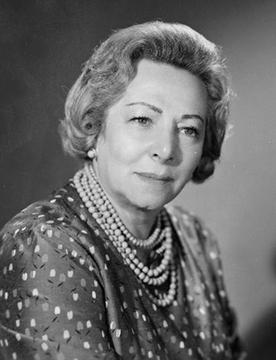Related Research Articles

María Cristina Estela Marcela Jurado García, known professionally as Katy Jurado, was a Mexican actress.

Mexican cinema dates to the late nineteenth century during the rule of President Porfirio Díaz. Seeing a demonstration of short films in 1896, Díaz immediately saw the importance of documenting his presidency in order to present an ideal image of it. With the outbreak of the Mexican Revolution in 1910, Mexican and foreign makers of silent films seized the opportunity to document its leaders and events. From 1915 onward, Mexican cinema focused on narrative film.

María de los Dolores Asúnsolo y López Negrete, known professionally as Dolores del Río, was a Mexican actress. With a career spanning more than 50 years, she is regarded as the first major female Latin American crossover star in Hollywood. Along with a notable career in American cinema during the 1920s and 1930s, she was also considered one of the most important female figures in the Golden Age of Mexican cinema, and one of the most beautiful actresses of her era.

Blanca de Castejón was a Puerto Rican actress who is best remembered for her work in the Golden Age of Mexican cinema, especially her award-winning supporting role in Escuela de vagabundos. She was born in Comerío, Puerto Rico, and died in Mexico City.

Libertad Lamarque Bouza was an Argentine and Mexican actress and singer, became one of the most iconic stars of the Golden Age of cinema in both Argentina and Mexico. She achieved fame throughout Latin America, and became known as "La Novia de América". By the time she died in 2000, she had appeared in 65 films and six telenovelas, had recorded over 800 songs and had made innumerable theatrical appearances.

Angélica María Hartman Ortiz, also known as "La Novia de México", is a Mexican singer and actress. She debuted as a child actress in the Golden Age of Mexican Cinema in films such as Pecado (1951), Una mujer decente (1951) y Mi esposa y la otra (1954). During the 1960s, she became a teen idol in Mexico thanks to her telenovelas and films, along with her musical career with compositions by Armando Manzanero that made her known as a rock and roll and pop ballad singer. Her hits include the Hot Latin Tracks top 40-singles "El hombre de mi vida", "Reina y cenicienta", "Prohibido" and "El taconazo".
The Golden Age of Mexican Cinema is a period in the history of Mexican cinema, between 1932 and 1969. It was characterized by the production of high-quality films that contributed to shaping the Mexican national identity and culture. Films such as Luis Buñuel's Los Olvidados represented the social realities of Mexico, leaving a profound impact on audiences both within the country and abroad.

Gloria Méndez Ramos, known professionally as Gloria Marín, was a Mexican actress. She was considered a celebrated female star of the Golden Age of Mexican cinema.

María de Lourdes Rojo e Incháustegui, commonly known as María Rojo, is a Mexican actress and politician. She was Senator of the Republic in the upper house of Mexican Congress. She debuted during the Golden Age of Mexican cinema.

Laura Ana "Tita" Merello was an Argentine film actress, tango dancer and singer of the Golden Age of Argentine Cinema (1940–1960). In her six decades in Argentine entertainment, at the time of her death, she had filmed over thirty movies, premiered twenty plays, had nine television appearances, completed three radio series and had had countless appearances in print media. She was one of the singers who emerged in the 1920s along with Azucena Maizani, Libertad Lamarque, Ada Falcón, and Rosita Quiroga, who created the female voices of tango. She was primarily remembered for the songs "Se dice de mí" and "La milonga y yo".

María Eugenia Llamas Andresco was a Mexican actress best known for her roles as "La Tucita" in the Golden Age of Mexican cinema in the late 1940s and in the 1950s. She began appearing in these films in 1948 at the age of four. She was the winner of the Mexican equivalent of the Oscar, the Premio Ariel. While she appeared in many movies after her childhood, she is less known for them. However, she remained popular for her radio and television appearances, for her on-stage story telling talent, and as a live theater actress, and was the 2007 recipient of the Diploma Medalla al Mérito award from the Spanish American Itinerate Academy of Itinerate Oral Narration.

Rosita Quintana was an Argentine-Mexican actress, singer and songwriter. She was one of the top leading ladies of the Golden Age of Mexican cinema. She starred in Luis Buñuel's Susana (1951) and musical films such as Serenata en México (1956) and Cuando México canta (1958). Her performances earned her acting awards from Mexico, Argentina, Russia, and Spain. In 2016, she received the Mexican Academy of Film Arts and Sciences' Golden Ariel Award for career achievement.
María Herminia Pérez de León, better known as Mimí Derba was a Mexican actress, screenwriter, and film director, considered the first female film director in Mexico.

Fanny Schiller Hernández was a Mexican award-winning character actress and television star, who also acted in operettas and musicals, during the Golden Age of Mexican cinema. She won two Ariel Awards for best supporting actress, and was nominated for two additional films. She was a social activist, creating the Actor's Union and inspiring the creation of “Rosa Mexicano”. She was accomplished at dubbing and was the voice of many animated characters as well as the official voice of several other notable Mexican actresses.

Anita Blanch was a Spanish-born, Mexican actress, who worked in the Golden Age of Mexican cinema. She was nominated for an Ariel Award from the Mexican Academy of Film three times and won the Best Supporting Actress Award from Diosa de Plata in 1963.

Anabel Gutiérrez Aicua was a Mexican actress and comedian. Her most memorable works included her participation in the film School for Tramps (1955), as well as her appearances on the program Chespirito (1970), playing the character of Doña Espotaverderona in some sketches.
This is a list of the films directed by Luis Buñuel.

The 60th Ariel Awards ceremony, organized by the Mexican Academy of Film Arts and Sciences (AMACC) took place on June 5, 2018, at the Palacio de Bellas Artes in Mexico City. During the ceremony, AMACC presented the Ariel Award in 26 categories honoring films released in 2017. The ceremony was televised in Mexico by Canal 22.

Enriqueta Margarita Lavat Bayona, known professionally as Queta Lavat, was a Mexican actress. She was the sister of actor Jorge Lavat and voice actor José Lavat, and mother of Mexican sports anchor Pablo Carrillo. She was best known for her roles in Las tandas del principal, Cruz de amor and Clase 406. At the time of her death, she was one of the last surviving stars from the Golden Age of Mexican Cinema.
Lupe Inclán (1895–1956) was a Mexican actress who became very popular in Mexican Carpa theatrical plays. She was also known for movies, mainly acting in supporting comic roles. She was known as one of the most prominent Mexican actresses interpreting village women in the 20th century.
References
- ↑ TIM, Televisa. "Los Inclán, íconos de la Época de Oro del cine mexicano". Distrito Comedia (in Spanish). Retrieved 3 June 2021.
- ↑ González, Publicado por Roberto. "Pistoleros Famosos" (in Spanish). Retrieved 3 June 2021.
- ↑ Amador Blanco, Ayala, María Luisa, Jorge (1985). Cartelera cinematográfica, 1950–1959 (in Spanish language). Centro Universitario de Estudios Cinematográfico, Dirección General de Difusión Cultural, Dirección Editorial. p. 216. ISBN 9789688373279.
{{cite book}}: CS1 maint: multiple names: authors list (link) - ↑ "Cineteca Nacional MEXICO". www.cinetecanacional.net. Retrieved 3 June 2021.
- ↑ "Festival de San Sebastián". sansebastianfestival. Retrieved 3 June 2021.
- ↑ "Enriqueta Reza – Edad | Biografía | Películas | Noticias | Filmografía | Premios". Decine21 (in European Spanish). Retrieved 3 June 2021.